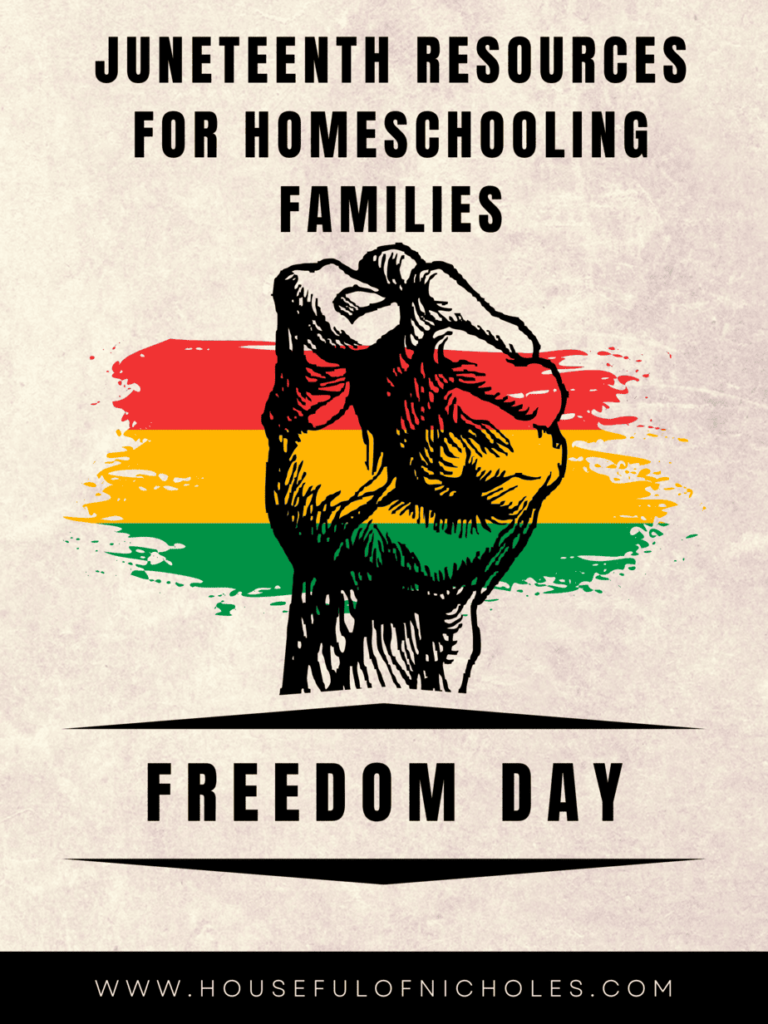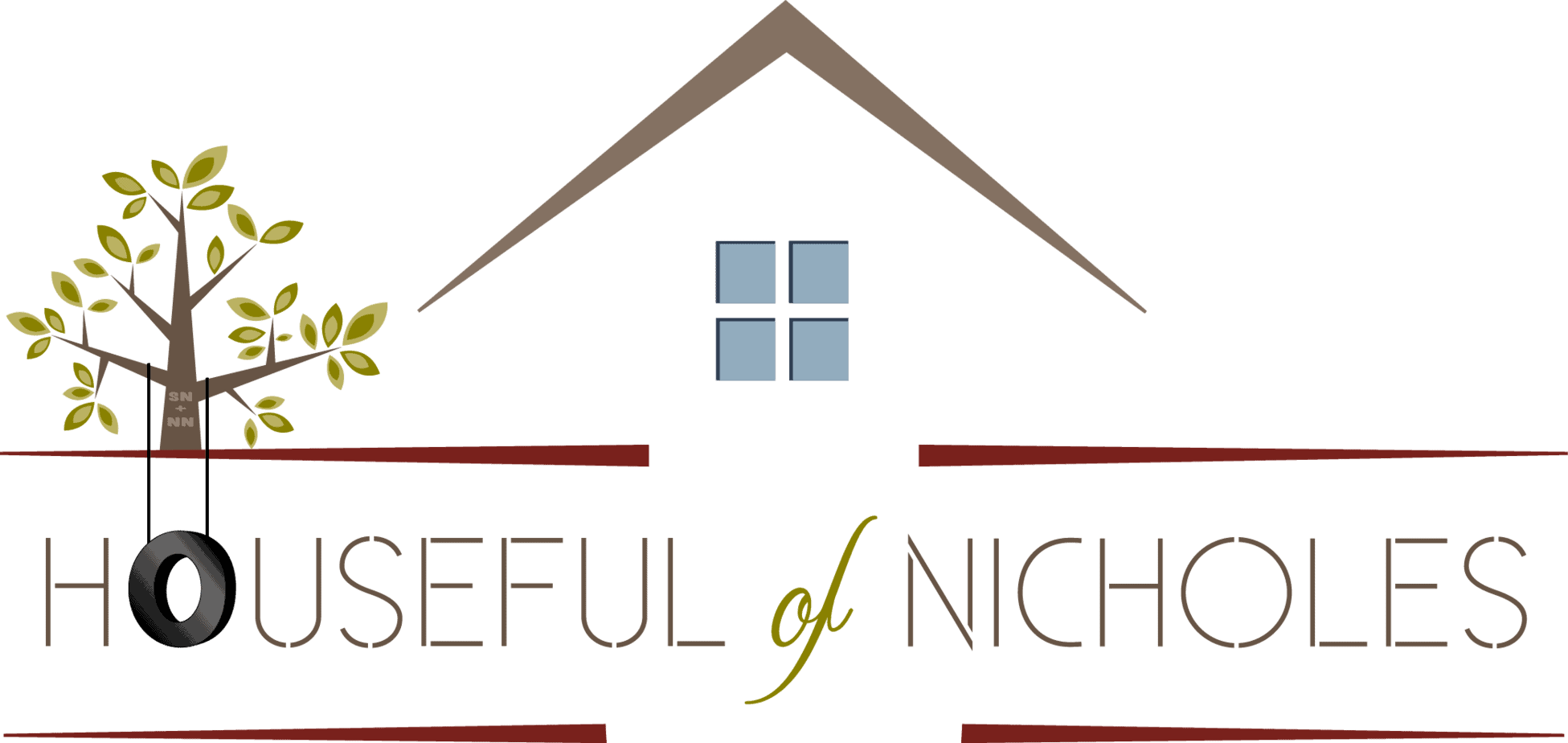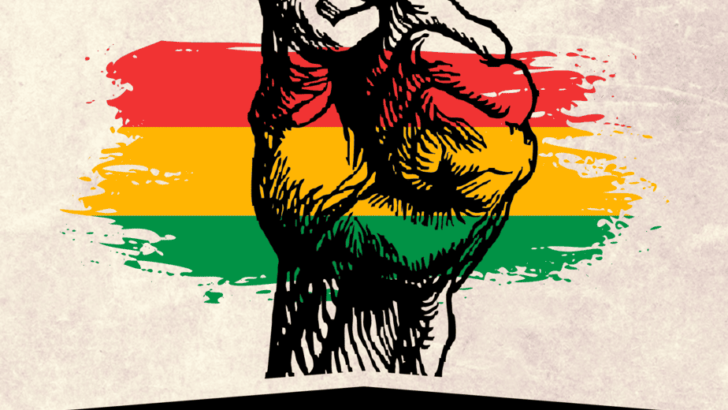As homeschoolers, we have the unique and rare opportunity to provide our children with accurate history. Many Juneteenth resources and textbooks credit Abraham Lincoln with abolishing slavery in 1863. What often remains unsaid is that it would take an additional two years before enslaved Africans throughout the country – not just the states in the South – would be free. If you're looking to take a deep dive and go beyond the history textbooks, here are some Juneteenth resources for homeschooling families to include in their lesson plans.

Juneteenth Resources for Homeschooling Families
Unit Studies and Lesson Plans for Juneteenth
The wonderful thing about picture books is that they can be used for a variety of ages; from young elementary grades, through middle school and sometimes even high school. This lesson plan from New Hampshire Humanities is based on a picture book and offers Juneteenth resources for homeschooling families and their public school counterparts for beginner, intermediate, and advanced levels.
Teachers Pay Teacher's website is full of engaging lesson plans and unit studies for a variety of topics. This Juneteenth Reading Passage and Activity Guide is geared toward middle schoolers and can be used on its own or alongside additional resources.
The Yocum African American History Association publishes lesson plans chronicling Black History through the years. The association was founded by two friends and educators, one Black, one white, "who shared a belief that Americans knowing more about each other is the surest path to unity forged a partnership and began their journey to uncover hidden black history."
Juneteenth Books to Use in Your Homeschool
It can be a challenge locating Juneteenth resources for homeschooling parents written by Black authors. We, however, owe it to ourselves and our families to do our due diligence and support our own. Here are some Juneteenth books by Black authors to include in your homeschool lessons.

Free at Last: A Juneteenth Poem
Beautifully illustrated, and emotionally charged, this book in poem form, by activist and writer Sojourner Kincaid Rolle, deserves a spot on every home library bookshelf.

Each of us remembers the childlike excitement of a big day ahead. Getting ready, choosing an outfit, the butterflies, and the anticipation of all the fun that's to come. Juneteenth for Mazie follows a little girl looking forward to a Juneteenth celebration with her family. Written and illustrated by the incomparable, Floyd Cooper, this book captures childhood joy and innocence in all its glory.

All Different Now: Juneteenth, the First Day of Freedom
Imagine what it may have felt like on that very first Juneteenth day in Galveston, Texas. Angela Johnson and E.B. Lewis bring history to life with this "in the moment" story. Your child will start to understand why some chose to stay where they were, and others moved on.
Opal Lee: Grandmother of Juneteenth

Opal Lee and What it Means to Be Free: The True Story of the Grandmother of Juneteenth
Celebrate Black History and the notion that anything is possible with this inspiring book that chronicles Opal Lee's life and mission. This picture book is geared for kids ages 4 through 8.
Juneteenth: A Children's Story by Opal Lee
Written by the "grandmother of Juneteenth" herself, this story explains slavery and the Juneteenth holiday to children in a way that they can understand. Lee spent years hosting her city's Juneteenth celebration and was the driving force behind Juneteenth becoming a national holiday.
Homeschool Field Trips Where Black History Reigns
While not an exhaustive list, the following museums are excellent Juneteenth resources for homeschooling families. You don't even have to travel to the museums to reap the benefits. It's still possible to virtually experience what each museum has to offer. Many sites provide online resources, workshops and webinars, and educational materials for families to incorporate into their learning.
The DuSable Black History Museum and Education Center
The DuSable Museum in Chicago dates back to 1961, when founder, Margaret Taylor Burroughs, a writer, activist, educator, and artist, established an independent museum to honor and celebrate Black Culture. Collections include over 15,000 works of art, print, sculpture, and items of historical significance.
Chicago Public Library - Hall Branch
Located in Chicago's Bronzeville neighborhood and named for Dr. George Cleveland Hall, the branch opened in 1932. It was designed to fill an unmet need in the underserved community. During the height of The Great Migration, Hall Branch served as a spot for greats such as Zora Neale Hurston, Lorraine Hansberry, and Langston Hughes to convene. Spend an afternoon perusing the shelves and picture your family settling in for a day of homeschooling amidst such inspiration and history.
The Road to Emancipation Day
International African American Museum
The International African American Museum (IAAM) will open in the Spring of 2023. The museum, built on Gadsden's Wharf, is the same location where an estimated 40% of all enslaved Africans were brought through to North America.
National Juneteenth Museum
Plans are currently in the works in Fort Worth, Texas for an entire museum dedicated to Juneteenth. And in the words of the great Dr. Opal Lee, "Oh man, Fort Worth is going to be a Mecca!" the "grandmother of Juneteenth" who rallied for years to make the day a national holiday, said of the museum.
The National Juneteenth Museum is set to open in 2024. According to the organization's mission statement, "the museum will serve as a place to share the historic path of the once enslaved."If you're looking to expand upon your Black History resources in your homeschool, I invite you to learn more about Christopher Paul Curtis, author of several books, including The Watsons Go To Birmingham and Bud, Not Buddy.

